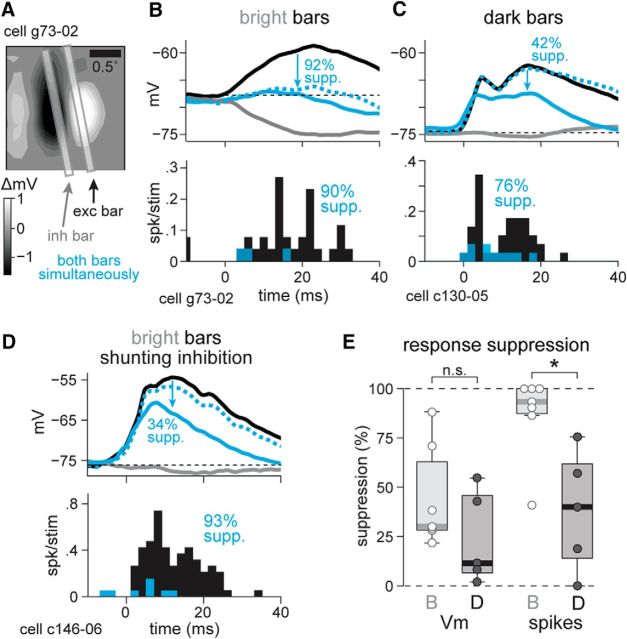Figure 7.
Bright inhibitory bars suppress spikes more efficiently than dark inhibitory bars. A, Example 2D RF and corresponding bar stimuli used for suppression experiment. The bright bar in the ON subregion is the excitatory stimulus, whereas the bright bar in the OFF subregion is inhibitory. The bars were presented individually and simultaneously. B, Top, Vm responses in the cell from A to the excitatory bright bar alone (black), the inhibitory bright bar alone (gray), and the combined stimulus (solid cyan), as well as the algebraic sum of the two individual stimuli (dashed cyan). The depolarization in response to the combined stimulus represents a 92% suppression (supp.) of the peak depolarization from the excitatory stimulus alone. Bottom, PSTH of spikes in response to the excitatory bright bar alone (black bars) and to the combined stimulus (cyan), showing a 90% suppression of spikes. C, As in B, an example with dark bars. D, As in B, an example with shunting inhibition from bright bars. E, Suppression of peak depolarization (left) and spikes (right) from n = 7 cells stimulated with bright bars and n = 5 cells with dark bars. While the difference in the suppression of depolarization between bright and dark bar stimuli did not reach statistical significance, spike suppression was significantly less effective for dark bars than for bright bars. *p < 0.05.

